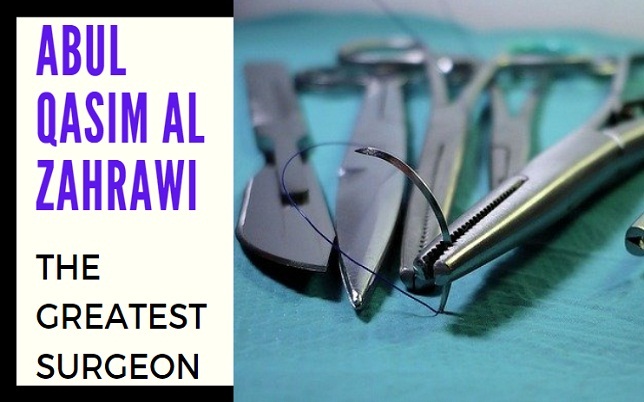Muslim Spain has produced some of the greatest intellectual giants and scientists of the medieval times, including Ibn-Rushd (Averroes), Ibn Khaldun, Ibn-Zuhr, Ibn-Baitar, Ibn-Khatib, Dinawari and Abul Qasim Al-Zahrawi, whose works, when translated into European languages, brought about the Western Renaissance as well as provided the firm ground on which the imposing edifice of European culture was built.
Contents
Muslim World Gave Birth to Modern Europe
Robert Briffault acknowledges in his well-known work ‘The Making of Humanity‘:
“It was under the influence of Arabian and Moorish revival of culture, and not in the 15th century that the real Renaissance took place. Spain, not Italy, was the cradle of the rebirth of Europe.
After steadily sinking lower and lower into barbarism, it had reached the darkest depth of ignorance and degradation when the cities of the Saracenic world, Baghdad, Cairo, Cordova, Toledo, were growing centres of civilization and intellectual activity.
It was there that the new life arose which was to grow into a new phase of human evolution. From the time when the influence of their culture made itself felt, began the stirrings of new life”.
Al Zahrawi: ‘The Greatest Surgeon‘
Al-Hakam II (961-976), better known as Mamoon of the West, was one of the most talented, learned and enlightened rulers of the Middle Ages. He ruled over Muslim Spain in the later half of the 10th century. His love for learning knew no bounds and his patronage had attracted to his Court, the intellectual luminaries from all parts of the world of Islam. Abul Qasim Zahrawi was one of them.
Al Zahrawi had founded a chain of higher educational institutions in Spain and had built a library containing 400000 books catalogued in 44 bulky volumes. The talented Caliph had gone through a sizeable number of them and had written marginal notes in them. According to Ibn Khaldun, he had purchased the first edition of the book of Farghani for ten thousand dinars.
Mr. S. P. Scot writes in his History of Moorish Empire in Spain:
“He (Al-Hakam II) was worthy representative of the advanced culture, the scientific attainments, the poesy and the art of Hispano-Arab civilization, as contrasted with the intellectual darkness, the disgusting immorality, the revolting filth, the abject superstition which characterized the contemporaneous society of Europe. His tireless industry and prodigious erudition were the marvels of his time”.
Abul Qasim Khalef ibn al-Zahrawi, better known as Abulcasis or Albucasis or Alsabaravius in the West, was one of the talented figures who adorned the court of Al-Hakam II, the Spanish Caliph. He is recognised as the greatest Muslim surgeon who was the personal physician of the Caliph. He was nick-named Al-Zahrawi because he was born at Al-Zahra, a suburb of Cordova in 936 A.C. He died in 1013 A.C.
Contributions of Al Zahrawi in Surgery
Abul Qasim al-Zahrawi, the greatest surgeon of Islam and of the Middle Ages, was a versatile genius. He was a talented surgeon, medical theorist and physician. The book on which his fame rests in ‘Al-Tasrif’, an encyclopaedic work in 30 sections dealing with medical science, whose most important last three volumes deal with surgery.
These volumes, introduce or emphasize such new ideas as cauterization of wounds, crushing a stone inside the bladder and the necessity of vivisection and dissection.
AI-Tasrif contains interesting and elaborate method of preparing drugs through sublimation and distillation. A portion of his surgical volumes is devoted to obstetrics and the surgical treatment of eye, ear and teeth.
This monumental work was first translated into Latin by Gerard of Cremona, published in Venice (italy) in 1497, at Strassburg (Germany) in 1532, at Basle (Switzerland) in 1541 and at Oxford (England) in 1778 A.C. It was also translated in Provencal and Hebrew.
Thus this work of repute earned great popularity in the West and held its place for centuries as a manual of surgery at Salerno, Montpellier and other early schools of medicine in Europe. It was illustrated with pictures and sketches of surgical instruments.
According to George Sarton, ‘the Muslim prejudices against surgery stifled Abul Qasim’s fame in Islam but in Christian world his prestige was soon immense’.
Al -Tasrif laid the foundation of the development of surgery in the West. An elaborate account of AI Zahrawi’s surgical work with 100 surgical instruments sketched in it is found in the German History of Surgery, ‘Geschichte der Chirurgie’, written by E. Grait and published in Berlin in 1898.
Capar Wolph in his ‘Collection Gynaeciorum’ has published the portion of AI-Tasrif dealing with gynaecology.
Abul Qasim al-Zahrawi is said to have invented many surgical appliances which were not known to the world.
Of his several instruments the three most useful were:
- The sponge tipped probang which he used to remove foreign bodies from the upper end of the respiratory canal
- The grooved probe meant for internal examination of the urethral passage
- The ear springs
AI-Zahrawi was a reputed physician as well as surgeon. In his invaluable work AI-Tasrif he has elaborately dealt with the preparation of several drugs, obstetrics and female diseases.
Al Zahrawi: An Outstanding Dentist
His description of the surgical treatment of teeth, ears and eyes is of exceptionally high order. It immensely benefited the West.
He was an outstanding dentist and his book is illustrated with numerous dental instruments meant for shaking, loosening and extracting the teeth.
His book contains the earliest type of the turn key extraction of roots, vulsella for removal of portions of the jaw and the gold and silver wire which he used to bind a loose tooth with a sound one.
He also dealt with the operation for correcting the projecting teeth which disfigures human face. He has very ably discussed the “oval deformities, dental arches and formation of tarter“.
He was an expert dentist who could very successfully set an artificial tooth in place of a diseased one.
Al Zahrawi’s Influence on the Science of Surgery
As a physician and surgeon Al-Zahrawi occupies an outstanding place in the history of medical science. He was rather first to explain the deadly disease, Haemophilia in which due to the absence of the clotting property, the incessant flow of blood cannot be stopped.
He was specialist in treatment of diseases with the help of fire and gives a list of fifty such diseases. According to Dr. Campbell:
“He made cautery the nautical instruments of the Arabs which led to the widespread use of this means of treatment throughout Western Europe during the Middle Ages”.
His influence on European medicine, especially on European surgery, was overwhelming. In fact, the study of his immortal illustrated work, Al-Tasrif which was translated into several European languages laid the foundation of Western surgery. The natural dislike for surgery in Islamic medicine prevented Al-Tasrif to win the same popularity in the Islamic world which it earned in the West.
Writing in his well-known work ‘History of Arabian Medicine’, Dr. Campbell acknowledges the great influence which Abul Qasim Al-Zahrawi produced on the development of Western medicine and surgery. He observes:
“His lucidity and method of presentation awakened prepossession in favour of Arabian literature among the scholars of the West.
His method eclipsed those of Galen and maintained a dominant position in Mediaeval Europe for five hundred years.
He helped to raise the status of surgery in Europe. His descriptions of operations are clear and particularly valuable because they portray the figures of surgical instruments used by him in the long course of his own surgical practice”.
Thus Abul Qasim AI-Zahrawi deserves to be ranked among the greatest surgeons of the world, one who was not only the father of surgical science during the medieval era but also developed it to a high degree of perfection.

